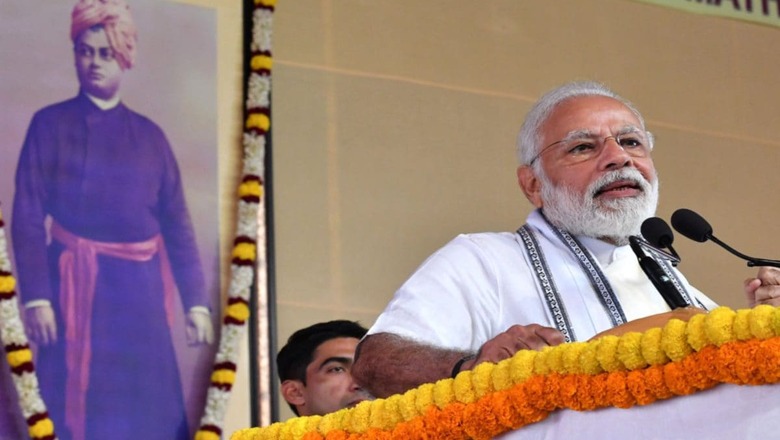
views
From Belur Math to Kamakhya and Almora to Kedarnath, a young Narendra Modi went to various parts of the country after leaving home. The life of Modi, who considered taking sanyas, took a different turn after a priest of the Ramakrishna Mission showed him a new direction.
In the summer of 1968, Narendra Modi left his house in Vadnagar, with just a bag carrying a few clothes and books. Nobody in his family knew where he was heading. It was Swami Vivekananda’s persona that dazzled the world 70 years ago, which showed PM Modi the path ahead.
In the City of Joy
After leaving his home and family in 1968, Modi started his journey to Kolkata, which was known as Calcutta back then. People from all parts of the country would visit the city back then to make their living. There are many folk songs based on this theme in different languages.
However, Narendra Modi did not go to Kolkata seeking economic prosperity. He went there with the idea of achieving spiritual growth. There couldn’t be a better place to achieve it than the Ramakrishna Mission, founded by Ramakrishna Paramahansa, and his famous disciple Swami Vivekananda, in Belur Math near Kolkata.
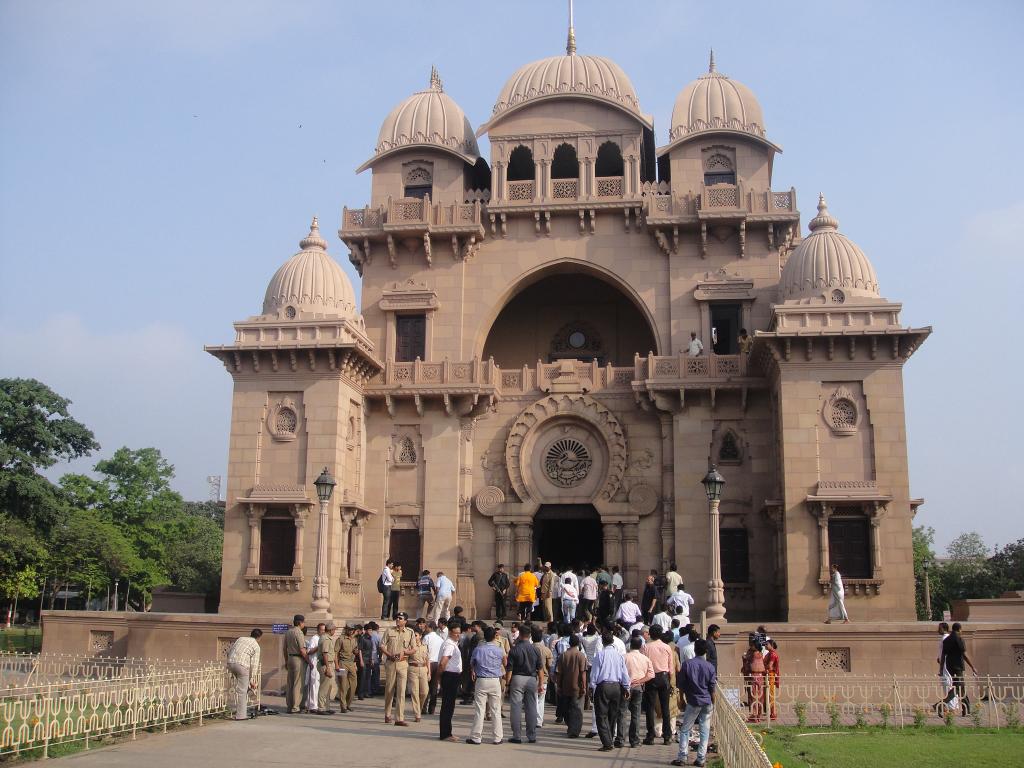
The Belur Math, spread over 40 acres on the western banks of the Ganga river in West Bengal’s Howrah district, is famous all across the world as the headquarters of the Ramakrishna Mission. This is the place where Modi’s idol Narendra also lived, whom the world knows as Swami Vivekananda. Swami Vivekananda had appointed Swami Brahmananda as the first president of the Ramakrishna Mission in 1901 to globally propagate the Vedanta philosophy, at the core of which is service, strength, moksha, and welfare of society.
When Modi reached Belur Math, Swami Vireshwarananda was leading the mission, which follows the guru-shishya tradition. Swami Vireshwarananda remained the head of the Ramakrishna Mission from February 1966 until he took Mahasamadhi in March 1985. During his long tenure, Swami Vireshwarananda gave ‘mantra diksha’ to hundreds of youths and expanded the work of the mission all over the world.
As per tradition, only the president of the Ramakrishna Mission and Math had the right to give ‘mantra diksha’. Later, the right was also granted to the vice president of the mission and then to those leading the mission in certain parts of the world. Swami Vireshwarananda had been the president of Math for over two years when Narendra Modi reached there.
When Swami Vireshwarananda learnt about Modi’s goal, he called him and asked about his family and studies. He found out that Modi had not even completed his graduation. As per the rules of the Ramakrishna Mission, ‘mantra diksha’ could be given only to those who had done their graduation in any subject.
Back then, PM Modi had not even completed a pre-university course, let alone graduation. In such a situation, Swami Vireshwarananda expressed his inability to make him a monk of the Ramakrishna Mission and urged him to pursue further education.
Off to Kamakhya
This was a major blow to young Narendra Modi’s goal of sanyas, but he did not give up. After spending some time at the Belur Math, Modi started his journey towards the Northeast and reached Guwahati where the Shakti Peeth Kamakhya Temple is located. Modi had been a worshipper of Goddess Shakti since childhood. He worshipped her with great enthusiasm during garba and used to visit temples and pray to Goddess Kali and Goddess Durga along with Lord Shiva.
But Modi did not stay at any place for a long time. While wandering, he also visited Uttarakhand, famous as ‘Devbhoomi’ for thousands of years. Several great sages have performed ‘tapasya’ at different periods of time here. Spirituality and philosophy abound in this region full of rivers, waterfalls, mountains, forests, lakes, animals, and vegetation. Modi got the inspiration to go to Uttarakhand also from his idol.
Following his idol
Swami Vivekananda had been visiting this place during the last few years of the 19th century. He liked it so much that he became a regular visitor. Details of Swami Vivekananda’s Uttarakhand visits in 1888, 1890, 1897, 1898, 1900, and 1901 are easily accessible. He reached Kathgodam for the first time by train in 1888 and then travelled towards the mountains from there.
During his visits, Vivekananda went to Nainital, Kakrighat, Almora, Kasar Devi, and Deval Dhar on one side, and to places like Dhari, Paharpani, Mornaula, Dhunaghat, and Lohaghat, where Mayavati Advaita Ashrama is. Vivekananda’s journey started soon after Ramakrishna Paramahansa took ‘mahasamadhi’ in 1886. Other disciples too went in different directions as part of their spiritual journey. At the time, Vivekananda was known as Narendra Nath.
Interestingly, Vivekananda’s first visit to north India was to Varanasi in 1887. And Narendra Modi went there in 2014 to contest the Lok Sabha elections.
After returning from eastern India, young Narendra Modi had gone to Almora for meditation during his Uttarakhand visit. Narendra Nath (Vivekananda) had also visited Almora in 1890. In September of that year, Narendra Nath did meditation for a long time in the cave of Kasar Devi in Almora. After this, he became a popular name as people were drawn by the radiance of his face.
But Narendra Nath felt it was not enough to reach the pinnacle of spirituality and there was a need to work for the welfare of humanity and the world, which was facing many challenges. Keeping this objective in mind, Vivekananda met Ajit Singh, the ruler of Rajasthan’s Khetri, in the hill station of Mount Abu, the very next year.
In May 1893, when Narendra Nath was going to the United States to participate in the Parliament of World Religions, Ajit Singh named him Swami Vivekananda. With this new name, Narendra Nath rose to fame at Chicago’s Parliament of World Religions. He put forth India’s Vasudhaiva Kutumbakam message so effectively that not just Vivekananda but Indian philosophy too received worldwide recognition.
Seven-and-a-half decades after Swami Vivekananda’s visit, Narendra Modi had reached Almora. He even visited Ramakrishna Kutir in Almora, established in 1916, two decades after Swami Vivekananda’s trip. Here, too, Modi expressed his desire to take ‘sanyas’. However, his wish couldn’t materialise since he was not a graduate.
Connection with Kedarnath
While roaming around in different areas of Uttarakhand after his Almora visit, Modi also reached Garud Chatti, three kilometres away from Kedarnath, part of the traditional route to visit the ancient temple of Lord Shiva. Modi spent about one and a half months here. During this period, he used to visit Kedarnath daily barefoot, do puja at the temple and then return and continue with his meditation.
A witness to Modi’s stay in Kedarnath during that period was Teerth Purohit Srinivas Posti, who himself lived on the banks of the Mandakini river. When Modi visited Kedarnath for the second time on October 20, 2017, after becoming the prime minister, he met Posti and they recalled the old days. During his visit, PM Modi also narrated his experiences from those times in his speech.
PM Modi said that meeting old friends and acquaintances brought back old memories. He said that at one point in time, he got the opportunity to immerse himself here for several years. But perhaps Baba Bholanath (Lord Shiva) wanted him to serve more than 125 crore Babas (the people of India) and not just one, he said.
After spending a little over a month near Kedarnath, Modi started his journey ahead. However, his attachment to Kedarnath did not diminish. The world also saw this in June 2013, when Kedarnath and the surrounding areas were badly affected by a cloudburst. Many people lost their lives and many more were stranded in the hills for several days.
The cloudburst tragedy occurred on June 16, while PM Modi reached Uttarakhand on June 21. He remained there on June 21 and 22 and not only took stock of the damage caused in the entire area via aerial survey but also made the proposal for reconstruction of the Kedarnath complex to the then Congress government in the state. Despite being in power at both the Centre and the state, the Congress didn’t accept it due to political reasons. Modi had emerged as a key challenge for it ahead of the 2014 Lok Sabha polls and the BJP had made him its campaign committee head that month.
At the time, Modi helped pull out several people stranded in inaccessible areas and arranged a special flight for them to reach their destinations. This also included a large number of people from his home state Gujarat. After taking charge at the Centre in May 2014, Modi prioritised the reconstruction work of the Kedarnath complex and the road leading to it. Within the next four years, he changed the face of this entire area and kept visiting it from time to time.
Modi visited Kedarnath as Prime Minister for the first time on May 3, 2017. After that, he also went there on October 20, 2017, November 7, 2018, May 18, 2019, November 5, 2021 and October 21, 2022. The photographs of Modi reaching Kedarnath after campaigning for the Lok Sabha elections in 2019 became a topic of discussion all over the world. Back then, he sat in a cave and meditated for 17 hours.
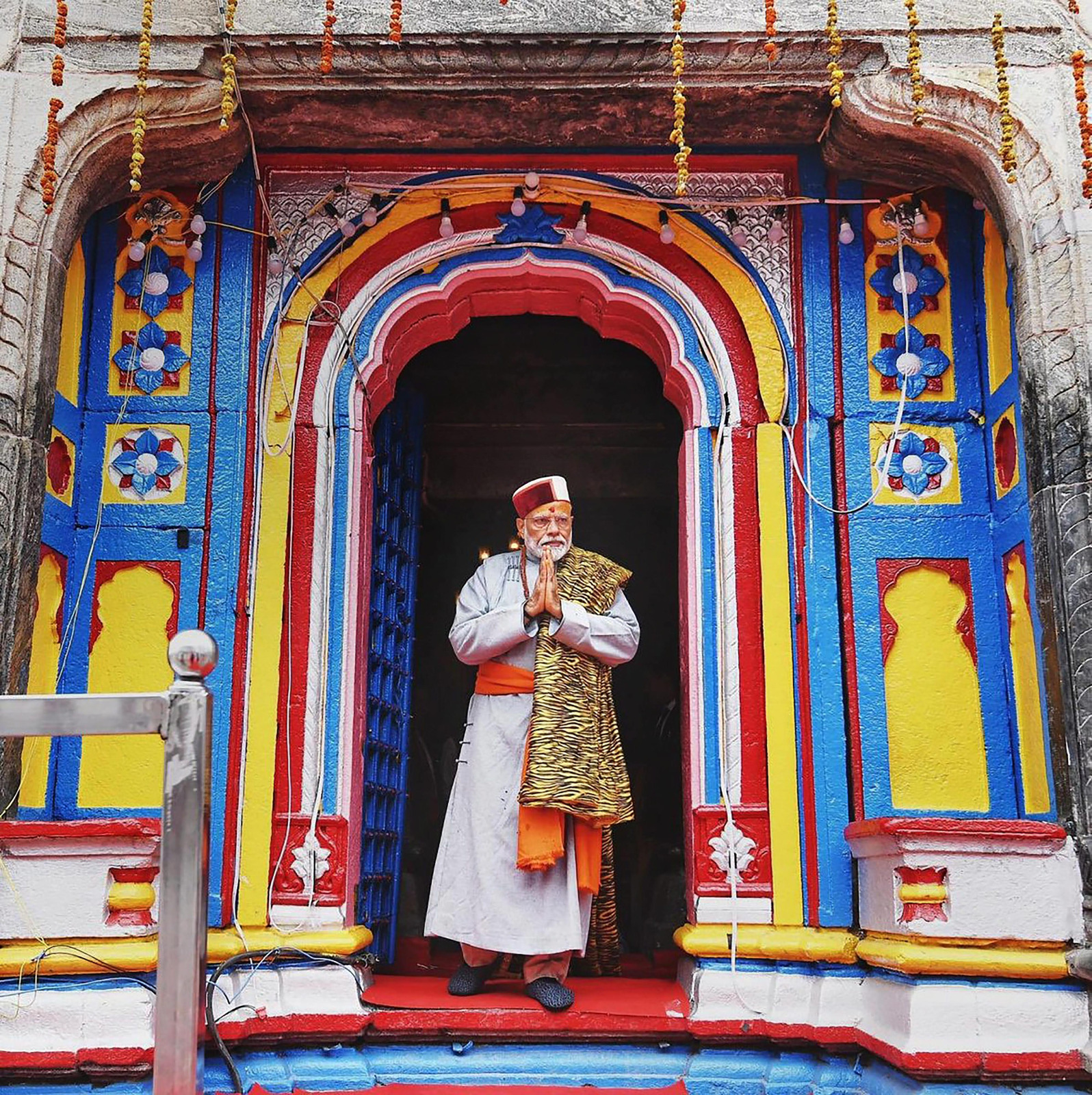
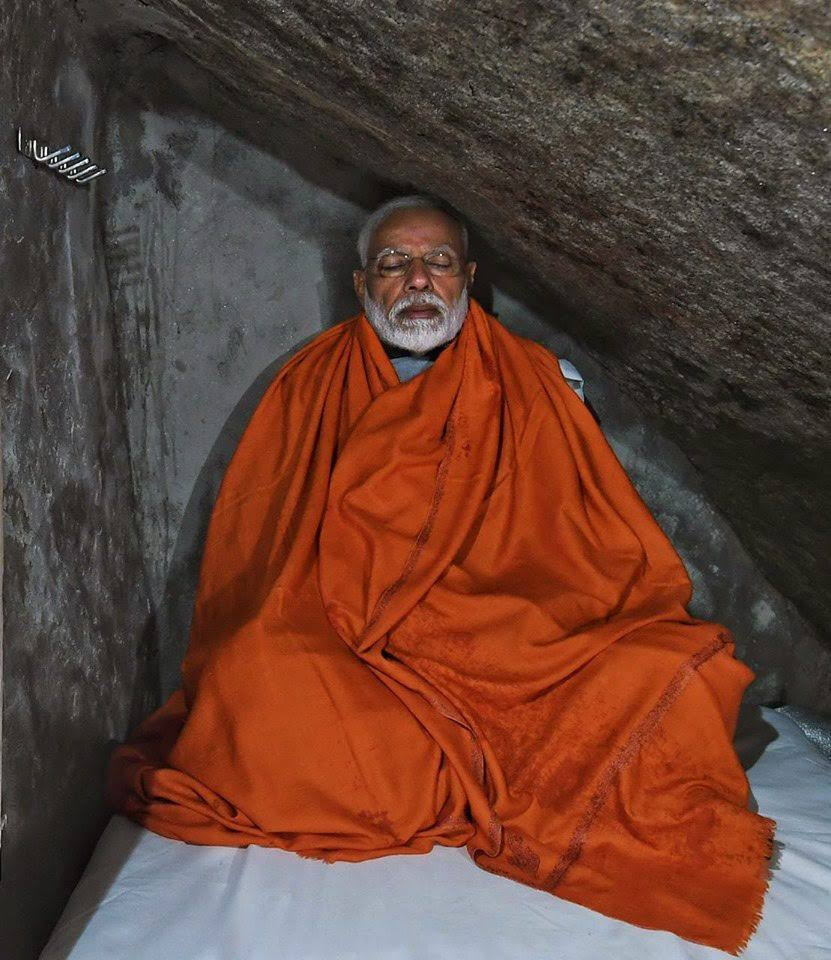
When Modi came to Kedarnath for the first time with the idea of taking ‘sanyas’, people who became his friends back then could not have imagined that he would come back repeatedly as the Prime Minister of India after few decades and redevelop several religious places in the country, including Kedarnath.
Back in Gujarat, but not Vadnagar
As far as young Narendra Modi was concerned, he reached Gujarat once again after meeting saints and sages in Rishikesh, Haridwar and other religious places, following his Kedarnath visit. However, he did not go to Vadnagar, his home, but started his journey towards Saurashtra. It was also a coincidence that PM Modi’s inspiration, Swami Vivekananda, reached Saurashtra in 1891, a year after completing his journey to Uttarakhand in 1890. From 1891 to 92, he travelled through Saurashtra’s Vadhwan, Limbdi, Palitana, Bhavnagar, Sihor, Junagadh, Girnar, Veraval, Somnath, Porbandar, and Dwarka, as well as Mandvi, Narayan Sarovar, and Bhuj in remote Kutch.
From Uttarakhand, Modi reached Rajkot, a major city in the Saurashtra region. Here, he started his journey towards the Ramakrishna Ashram. The ashram in Rajkot was started on a small scale before Independence on March 5, 1927, on the occasion of Ramakrishna Paramahansa’s birthday. In the next few decades, the scope of the Ramakrishna Mission’s activities in Saurashtra gained momentum and with it, the size of the ashram also grew.
Meeting Swami Atmasthananda
Two years before PM Modi reached this ashram in Rajkot, Swami Atmasthananda had come here. Swami Atmasthananda became the new president of the Rajkot-based ashram in March 1966. He was born in May 1919 and while studying at Presidency College in Kolkata, he came in contact with the Ramakrishna Mission while doing an MA in Philosophy, he took ‘mantra diksha’ in 1941.
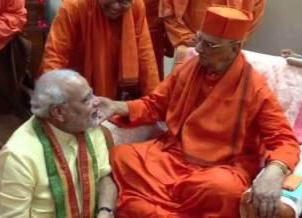
At first, Swami Atmasthananda stayed in Deoghar and later in Mayavati Advaita Ashrama. Before coming to Rajkot, Atmasthananda worked for the Ramakrishna Mission in Myanmar. However, due to the establishment of military rule in Myanmar, he returned to Kolkata and from there he reached Rajkot.
After he came to Rajkot, Swami Atmasthananda started learning the local language to communicate better with the people. Within a short time, he learnt Gujarati and continued speaking it throughout his life. After leaving Rajkot in 1973, whenever someone from Gujarat met him at Belur Math, he would speak to that person only in Gujarati. It was during his time that the construction work of a new temple started at the Rajkot ashram.
By the time Modi reached the ashram in Rajkot, Swami Atmasthananda was familiar with the local culture and traditions of Gujarat. Here, too, a young Narendra Modi expressed his desire to take sanyas. After assessing Modi’s personality, Swami Atmasthananda told him that his place was in society and not in taking sanyas. He told Modi that he should give up the idea of sanyas and should rather be among the people, serve society, and not think of living his life as a monk. Following his advice, Modi returned to Vadnagar.
Who would have thought that Swami Atmasthananda’s words would become a reality one day? It was a coincidence that after Modi became the chief minister of Gujarat in October 2001, he went to the same Rajkot city to contest the assembly by-election in February 2002. He won big and officially started his career as a public representative.
In service of the people
The opportunity that Modi got to serve 5.5 crore people in October 2001 as the chief minister of Gujarat, transformed into an opportunity to serve more than 125 crore Indians after becoming the prime minister in May 2014.
In his journey from CM to PM, Modi has completed more than 22 years and the story continues. Even opposition parties are not convinced that after the 2024 Lok Sabha elections, the country’s reins can be taken away from him.
As far as Modi is concerned, he often recalls the steps he took on the path of spirituality five decades ago. Modi visited Belur Math in 2013 and met Swami Atmasthananda, who had become the president of Ramakrishna Math and Ashram in December 2007. On May 26, 2014, when he was taking oath as Prime Minister for the first time, he had a flower in his pocket as ‘prasadi’, given to him by Swami Atmasthananda.
Apart from the ‘prasadi’, Swami Atmasthananda had also sent a letter saying, “I am looking forward to your visit to Ramakrishna Ashram as the Prime Minister of India. I am happy that you are going to rule with such an overwhelming majority. Lord Ramakrishna has given you this opportunity to serve the people of India without any discrimination.”
Within a year after becoming the Prime Minister, Modi reached Belur Math on May 11, 2015. Like last time, PM Modi meditated in the room where Swami Vivekananda used to meditate. He also met Swami Atmasthananda, who was ill, and enquired about his well-being in Gujarati. Despite his poor health, Swami Atmasthananda was seen answering Modi in Gujarati.
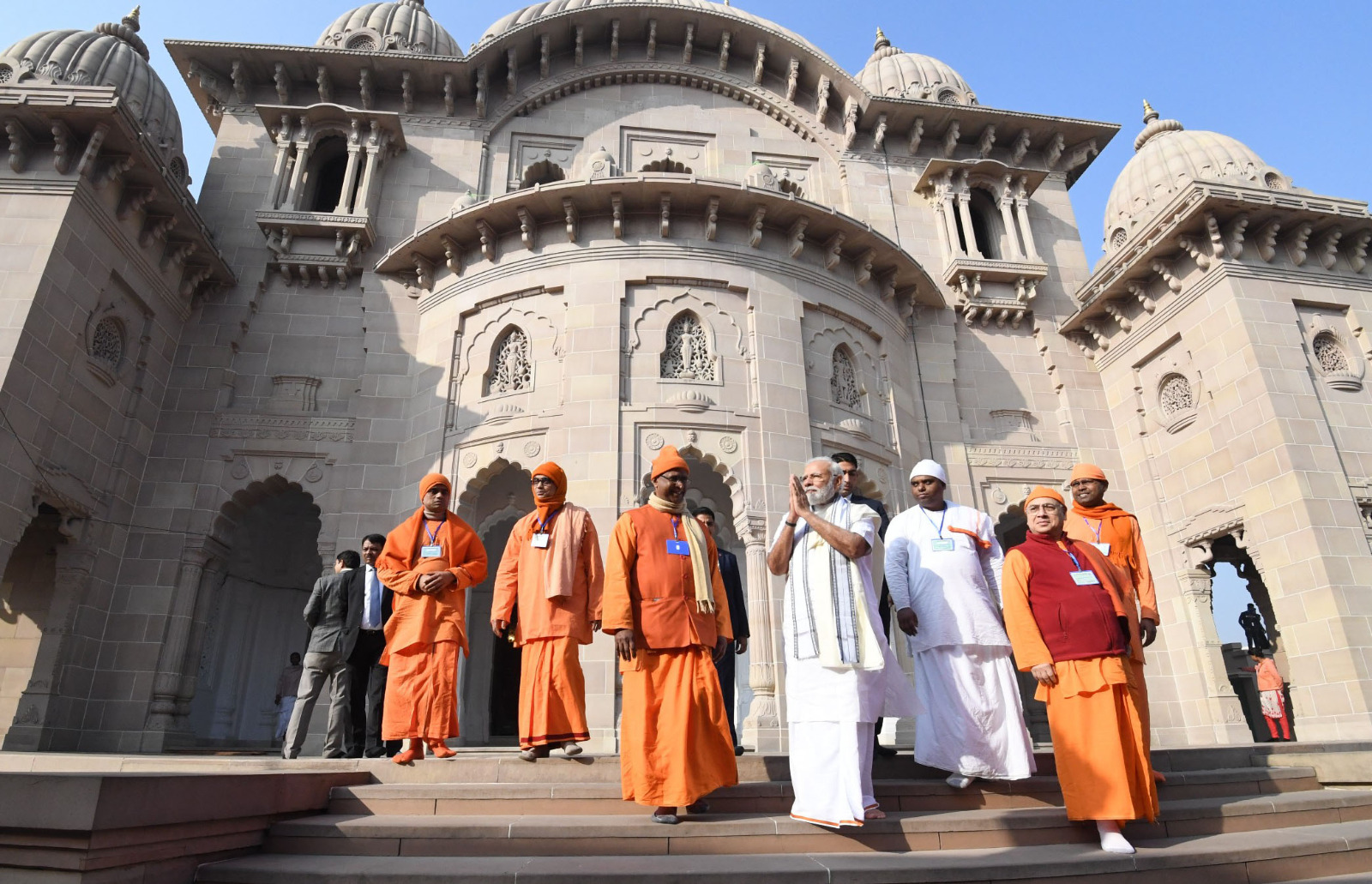
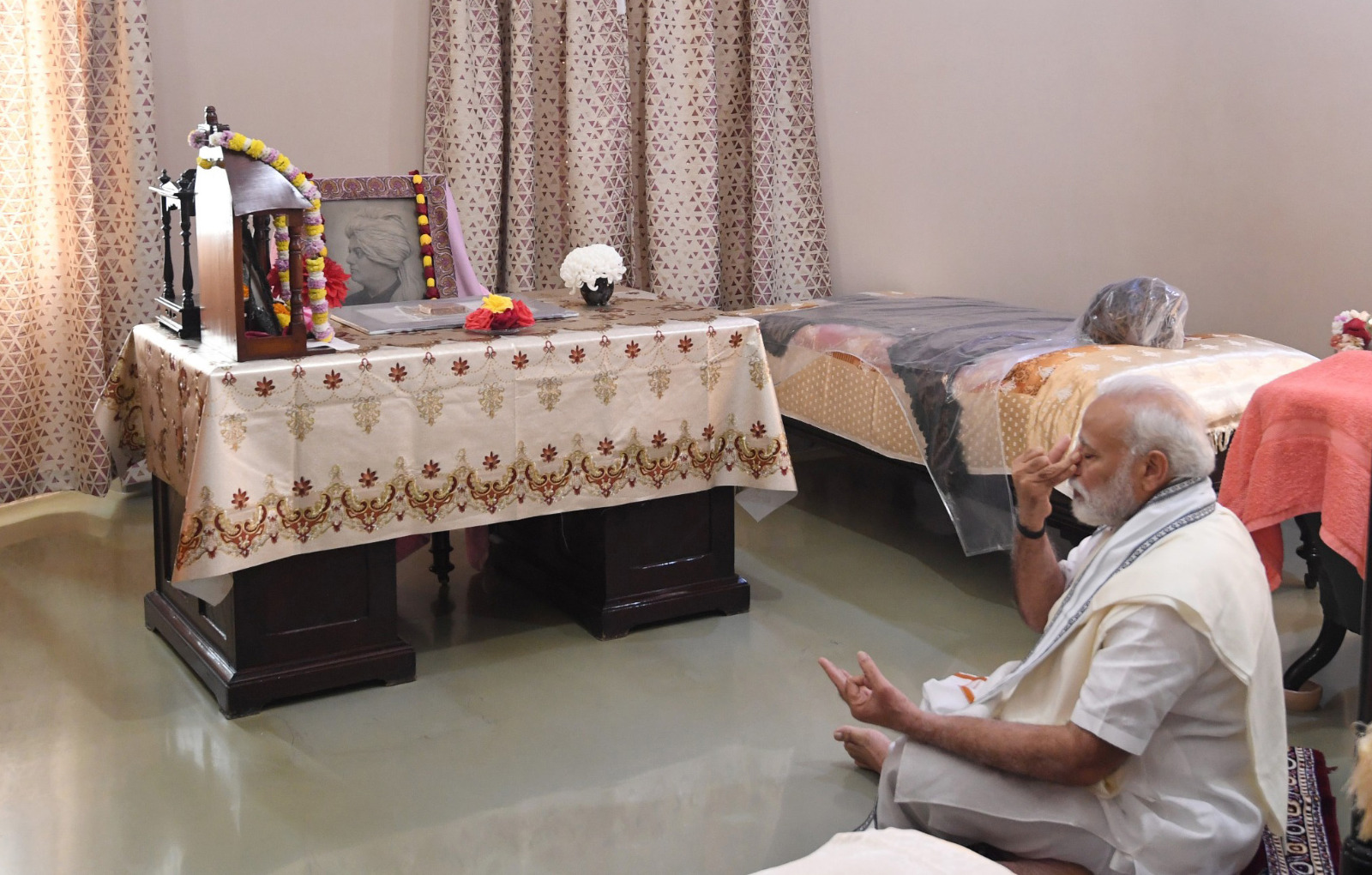
Swami Atmasthananda passed away on June 19, 2017, at the age of 98. Modi wrote on X (then Twitter), “The demise of Swami Atmasthanandaji is a personal loss for me. I lived with him during a very important period of my life.”
This is an important period of PM Modi’s life, which only comes to light when such saints, monks, and people from these religious places talk about it, or when the Prime Minister himself recalls those days. These saints such as Swami Atmasthananda had a fair idea of both the future and potential of Modi even when he was very young and so they set him on the right path. Even years after making great strides in public life, PM Modi often remembers those times, fondly.




















Comments
0 comment